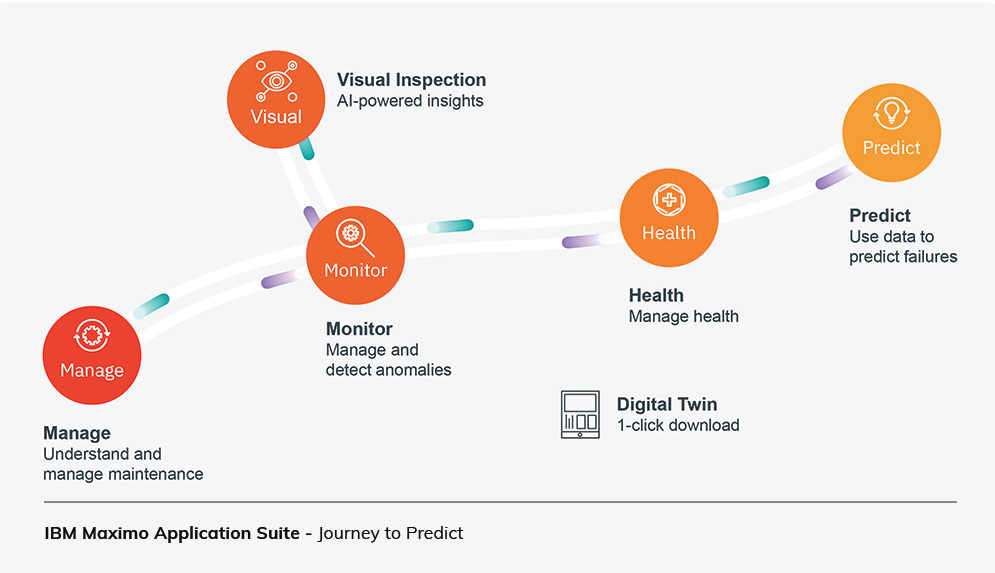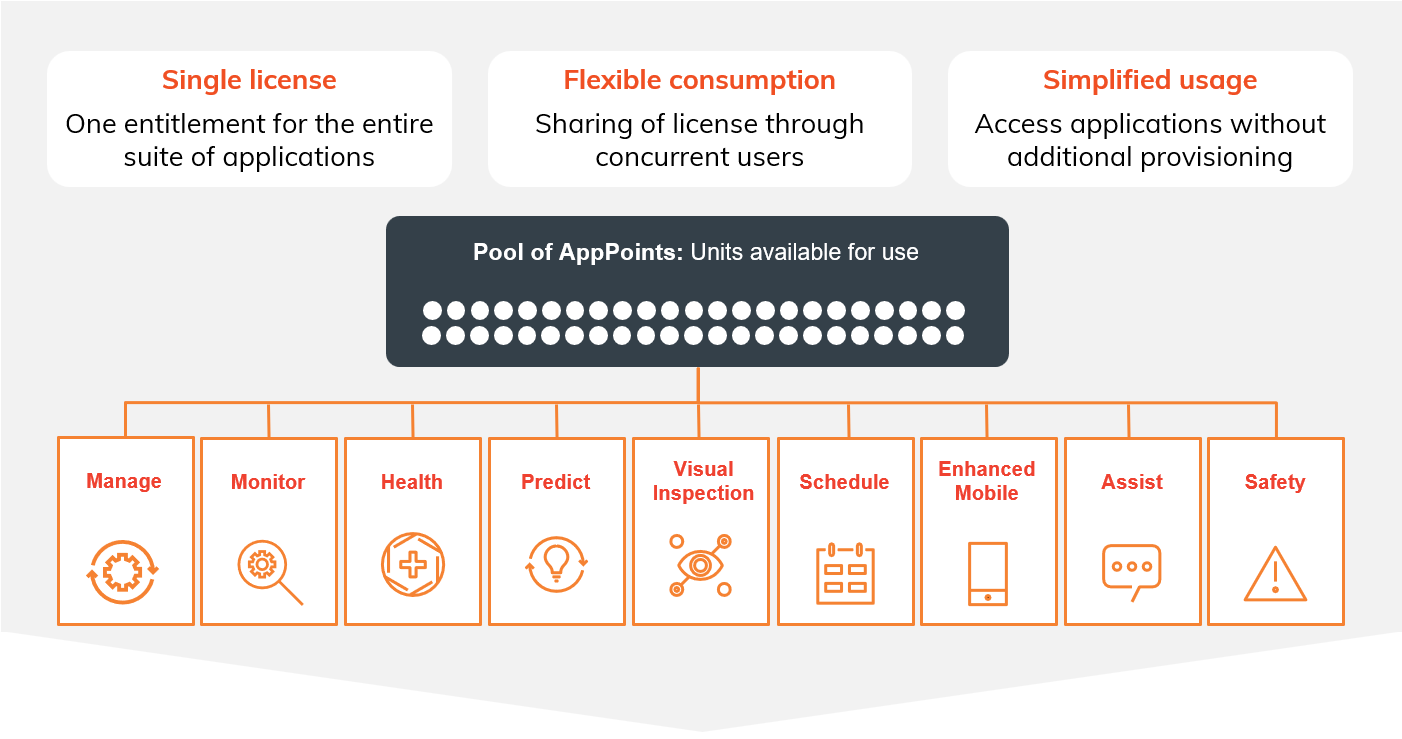IBM Maximo Application Suite (IBM MAS) was launched as version 8 of IBM’s market leading enterprise asset management software platform in July 2021. With end of support for version 7.6.1.x looming, now is the time for savvy system owners to start planning their migration strategy.
Although updating to a major new version release can feel like a risky proposition, this version of IBM MAS is now up to release 11 and has a lot to offer organisations that have come to rely on Maximo to support their asset operations. IBM MAS brings all applications within the Maximo portfolio together under a single licence entitlement, with flexible consumption allowing organisations to make use of any solution within the suite. IBM MAS offers customers:
- Simplified licensing - providing one licence entitlement to access the entire IBM Maximo portfolio in a model that is simpler to scale and administer.
- Enriched functionality - the extended application suite offers functionality to take customers on a maturity journey, including a new approach to mobility, asset performance management and AI assisted inspection and predictive analytics.
- Integrated platform - IBM MAS is built to run on Red Hat OpenShift Container Platform for optimised scale and availability on on-premises, private and public clouds, or hybrid environments.
Working with an experienced and trusted partner, upgrading to IBM MAS needn't be a traumatic experience. But like any major project, it pays to go in with your eyes wide open. Here is some information that COSOL’s team of experts have prepared for savvy IBM Maximo system owners contemplating the journey to IBM MAS.
When is the best time to move to IBM Maximo Application Suite?
Organisations currently running on IBM Maximo 7.6.1.x still have a solid two years before IBM will shut down support. It’s never fun leaving mission-critical system upgrades to the last minute, but are there any advantages to moving early?
IBM MAS is a major version release for a reason. Not only does it offer a new, simplified licensing approach, the enriched suite of applications also offers a comprehensive journey to predictive maintenance. Organisations with the operational maturity and data quality to pursue this journey will be well served by upgrading to IBM MAS now.
With access to the extended suite of applications, organisations can:
- grow (or centralise) their IoT footprint and consolidate the platform capturing information on all asset classes through IBM MAS Monitor.
- identify and classify defects or anomalies broadening the reach beyond simple human analysis through IBM MAS Visual Inspections.
- understand the status of critical equipment and assets with insights from data and analytics to make smarter decisions about management and maintenance through IBM MAS Health.
- unify disparate operational data into analytics-driven predictive maintenance models to help optimise maintenance planning and improve asset reliability through IBM MAS Predict.

In addition to accessing enriched functionality, upgrading sooner rather than later is a wise option for organisations that:
- have a lot of licences that aren’t being used - shifting to AppPoints (see below) is a good opportunity to right size.
- run multiple shifts and/or have a high number of occasional users - the IBM MAS concurrent user model is likely to work in your favour.
What are AppPoints and what do they mean to me?
AppPoints are a unit of measure with a common value by which IBM MAS can be licensed, and will be mandatory for all organisations undertaking a technical upgrade to version 8.0. By eliminating the fixed relationship between authorised users and licence entitlements, businesses can access the entire MAS suite. Users in the organisation will have a pool of AppPoints that will allow them to seamlessly move from one application to another as needed, spanning Maximo Manage, Mobile, Monitor, Health, Visual Inspections and Predict.

This is quite a change from named users. When a user logs into MAS and launches an application, the associated number of AppPoints are checked out of the AppPoint licence server. The number of AppPoints consumed is based on each users' access profile and which applications they have access to. When the user exits, the AppPoints are checked back into the licence server. There are some components that are not user-based (install/server components eg: SAP Adapter; Spatial Install) that will also consume AppPoints.
We are particularly excited about AppPoints as they offer significantly more flexibility for organisations in how they use the Maximo Application Suite. In addition to making it so much easier to trial new functionality offered by the variety of applications within the suite, AppPoints reduce risk and overheads in managing licensing compliance. MAS comes with the option to prevent you from exceeding your AppPoints entitlement, and COSOL has developed proprietary tools that will help you proactively keep on top of licensing by monitoring and constantly refining the license assignment based on actual usage patterns.
It’s worth noting that switching to simplified licensing can be done independently of the technical upgrade to IBM MAS 8.x. While still working with IBM Maximo 7.6.1.x you can take advantage of IBM MAS AppPoints to optimise your security groups and balance between named and concurrent users, eliminate unnecessary purchases of additional IBM Maximo product specific licences (like Scheduler or Spatial), and start utilising IBM Maximo apps like Mobile, Monitor and Health.
There is a path for existing IBM Maximo licences to the transitioned to IBM MAS AppPoints. The impact will vary according to your current usage and licensing model. The best place to start is to contact your COSOL Client Executive to conduct a migration assessment. This will assist you in understanding both the licensing and technical implications of upgrading and formulate a transition plan.
Does moving to IBM MAS also mean moving to the cloud?
The underlying architecture for IBM MAS is quite different from previous Maximo versions. IBM MAS is built on the Red Hat OpenShift platform rather than IBM WebSphere. This means that although there are many deployment options available, continuing with an “on premises” implementation will require a new set skills and technologies. Maintaining these skills long term requires investment in people or engaging third party providers. As these obstacles are encountered by organisations not wanting to accept these risks, interest and adoption of fully-inclusive Cloud solutions will continue to grow.
There are many benefits in moving to the cloud with IBM MAS:
- Niche specialist skills are not required to be maintained on staff.
- The complexities of maintaining the security, scalability, availability, resilience and all associated supporting technologies are outsourced to a competent solution provider.
- Immediate access to new releases or new functionality when requested.
- Patches and upgrades are provided as part of the service.
- Cloud to Cloud integrations becoming more available as supported connectors.
How can I prepare for a successful upgrade?
The core IBM Maximo Enterprise Asset Management program becomes IBM Maximo Manage in MAS. IBM Maximo Manage is based on IBM Maximo 7.6.1.2, and there are no functional changes – so any configurations will be preserved. Users will notice differences in the clean, modern interface which uses IBM's open source Carbon Design System, but it is based on the existing IBM Maximo layout, so screens will still be familiar.
The technical upgrade to IBM MAS is not particularly difficult. Having your data ready and teams enabled to take advantage of the new functionality available is another matter.
IBM MAS offers a comprehensive journey to predictive maintenance but the ability to take advantage of these applications and realise the maturity outcomes comes down to your data and how IBM Maximo is setup. For example, before IBM MAS Predict can deliver meaningful insight, a full picture of the asset being monitored is required. If information such as remaining life, work order breakdown history and cost, are not available, then the accuracy and validity of the prediction is diminished. Not having an asset hierarchy that is representative of your operations can also inhibit certain asset classes from being included.
So, reviewing your data quality and structure to ensure the functionality of the extended IBM MAS suite will not be closed to you is a valuable investment in your continuing journey to asset management maturity.
The upgrade to IBM MAS is a timely opportunity to assess the health and performance of your Asset Management Information System (AMIS) environment and implement any performance and functional improvements identified. COSOL is in the unique position of being able to advise and assist with the technical, functionality and licensing challenges and opportunities you may face. Contact us to progress your journey to predictive maintenance and let us help you build out your upgrade plan.
Speak to us about upgrading to IBM MAS starting with a MAS Readiness Assessment conducted by EAM specialists.
Contact us to arrange an online or in-person meeting at a time that suits you.


